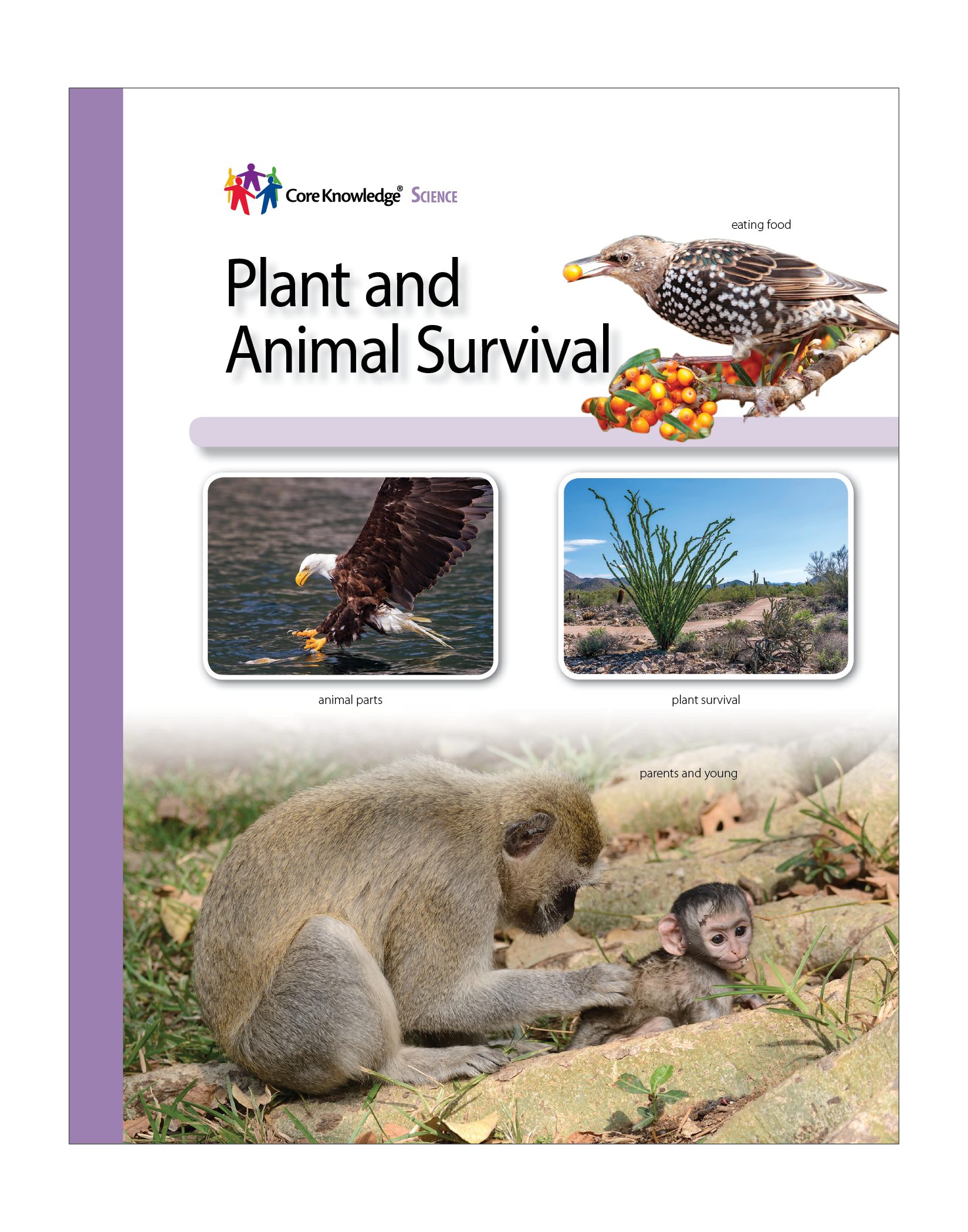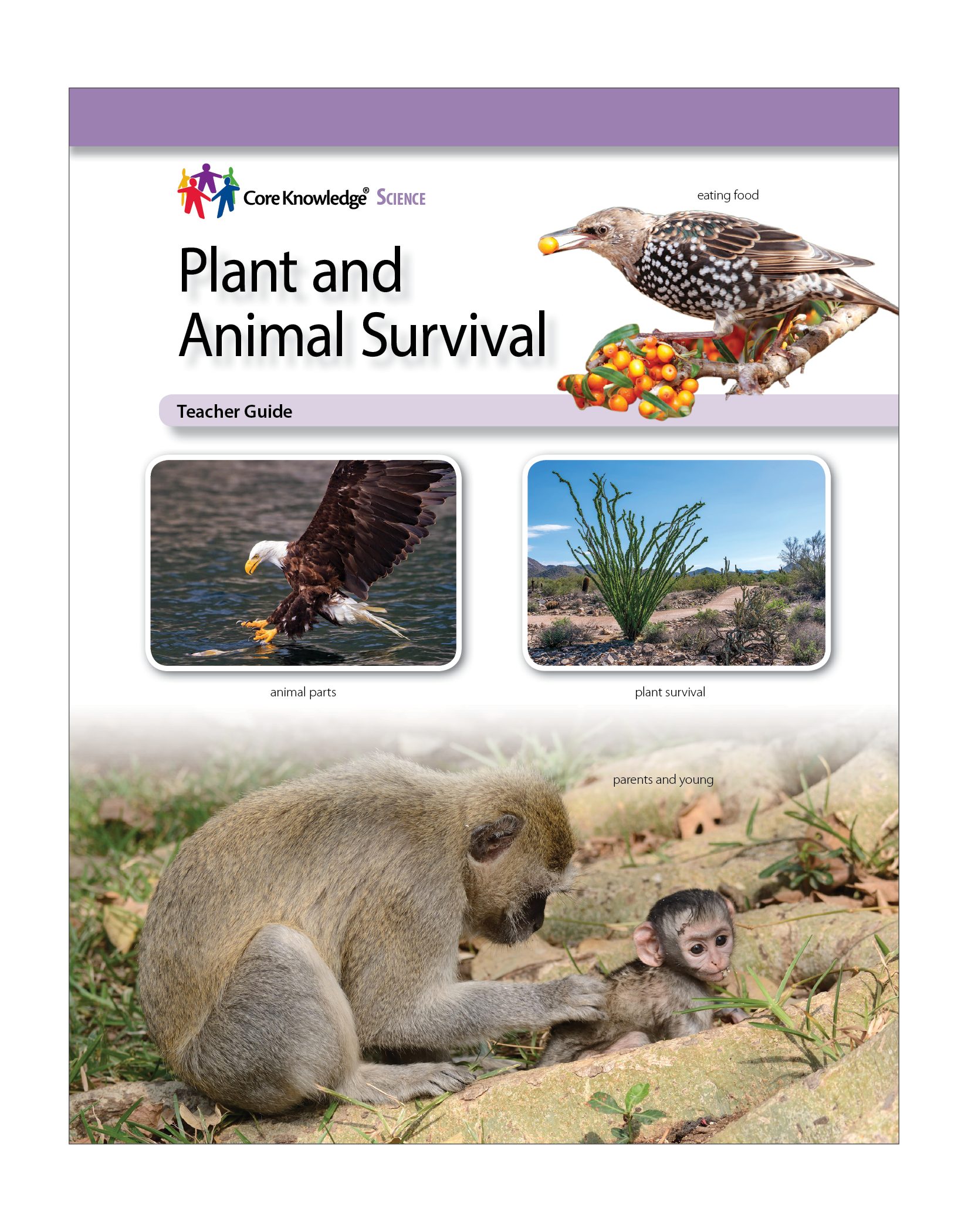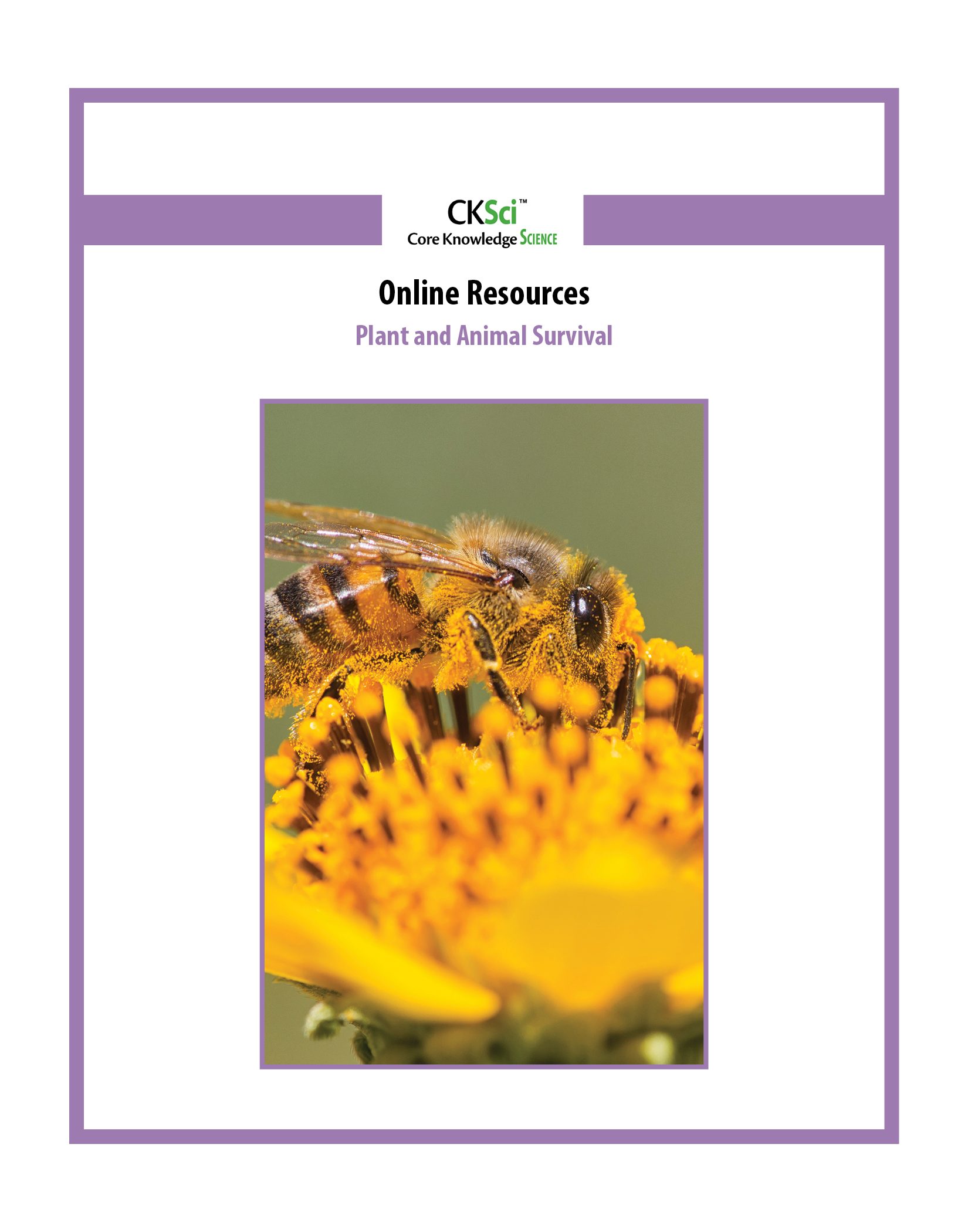
CKSci Unit 2: Plant and Animal Survival
Focus:
In this unit, students examine physical and behavioral traits for survival as they plan an animal sanctuary and rehab agency. Students will then apply what they learn to determine how an animal rehab agency imitates nature to help animals survive. Students will further investigate traits, parents, offspring, and behaviors in Grade 3 Unit 2 Life Cycles, Traits, and Variations. They will further investigate structure, function, and information processing in plants and animals in Grade 5 Unit 2 Structures and Functions of Living Things.
Students explore concepts that include the following:
- All organisms have external parts. Different animals use their body parts in different ways to see, hear, grasp objects, protect themselves, move from place to place, and seek, find, and take in food, water, and air. Plants also have different parts (roots, stems, leaves, flowers, fruits) that help them survive and grow.
- Adult plants and animals can have young. Among many kinds of animals, parents and offspring engage in behaviors that help the offspring survive.
- Animals have body parts that capture and convey different kinds of information needed for growth and survival. Animals respond to these inputs with behaviors that help them survive. Plants also respond to some external inputs.
- Young animals are very much, but not exactly, like their parents. Plants also are very much, but not exactly, like their parents. Individuals of the same kind of plant or animal are recognizable as similar but can also vary in many ways.
Engineers and engineering designers use knowledge of the things animals and plants need for survival when designing solutions that help living things. This series of lessons incorporates learning goals that support the principles and practices of engineering design, such as defining problems, testing materials, and evaluating possible solutions.
Number of Lessons: 4 (Each lesson is divided into four to five lesson segments.)
Instruction Time:
- Each Lesson may be divided into Lesson Segments.
- Each Lesson Segment is designed to be completed in one 30–45-minute class period.
- Some single-day activities and performance tasks might require setting aside a longer block of time.
- This Unit should be completed between 38–57 classroom days.
- A Pacing Guide Template is provided within the Teacher Guide so teachers can map out customized instructional days for this unit.
- A complete list of Materials needed to complete the unit is provided in Online Resources.
Additional Search Terms:
structure • body part • plant • animal • survival • animal senses • tropism • plant senses • bloom • parent • offspring • species • trait • behavior • communicate • naturalist • conservationist • nonfiction • informational text



